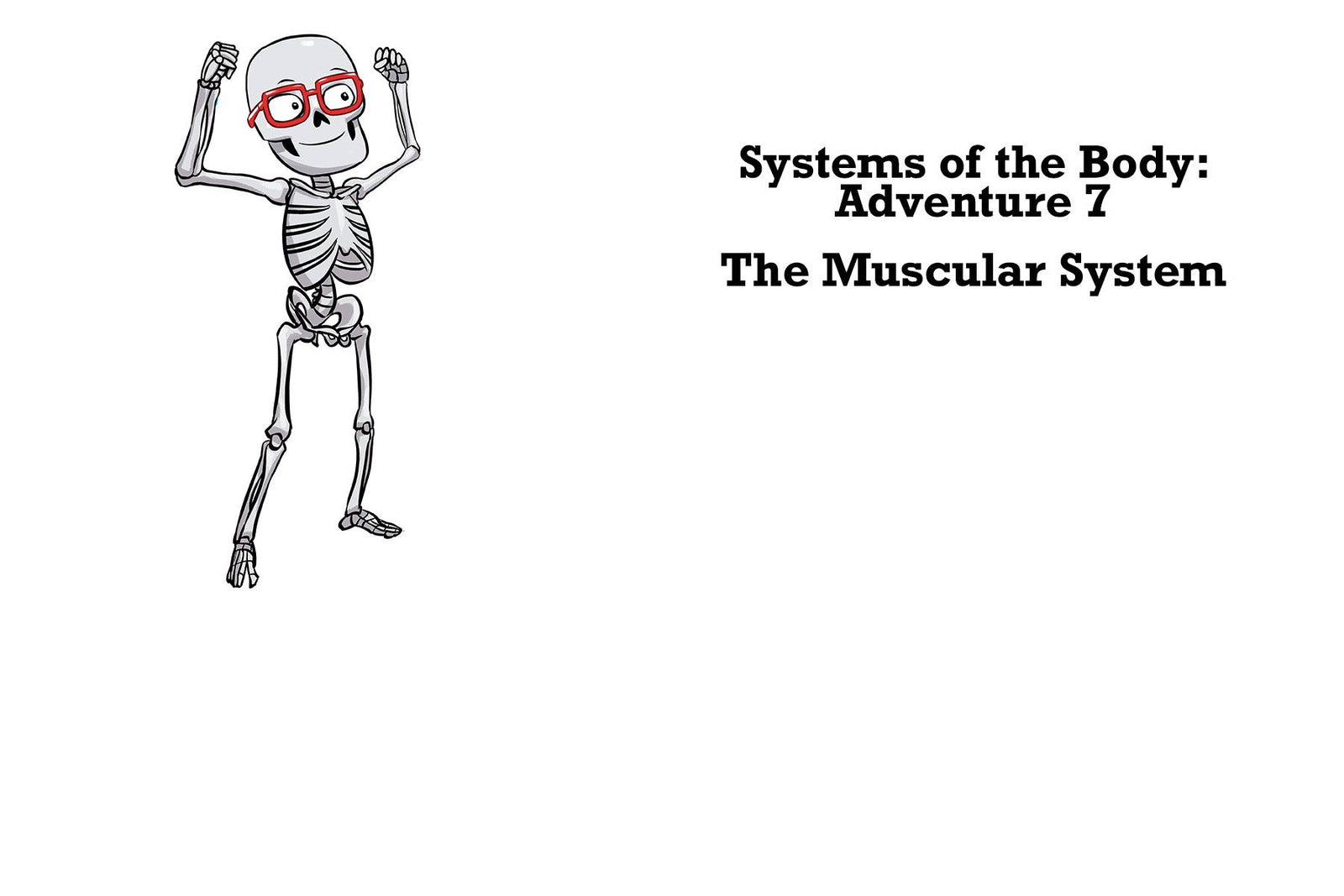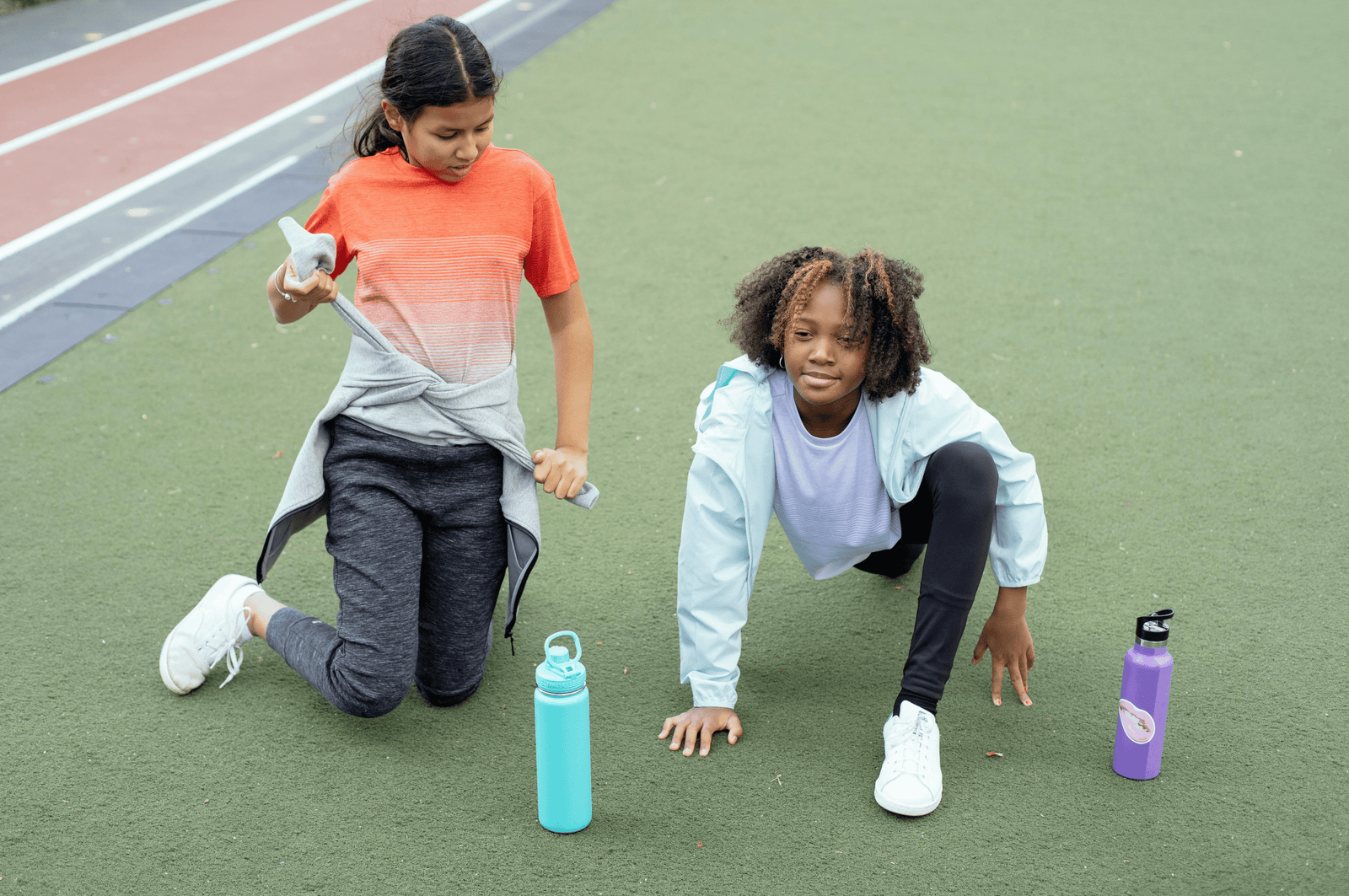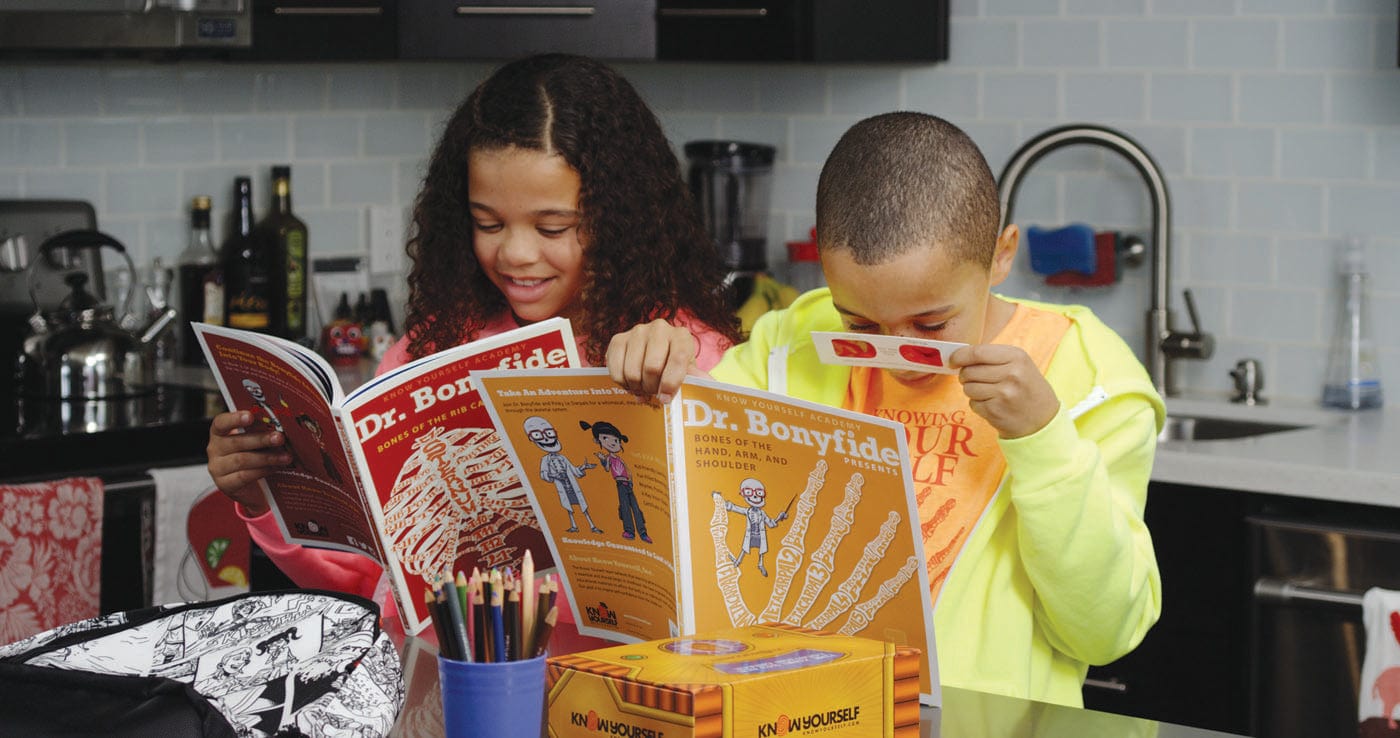
The Muscular System: Therein Lies Your Power
You have over 600 muscles in your body. So many, in fact, that muscle makes up about half your weight. It may seem muscles take up more than their fair share, but they have good reason to make such a heavy claim to your frame: muscles are your body’s primary source of power. Whenever something inside you needs to move, chances are your muscles make it happen.
Fun Fact:
The word “muscle” comes from the Latin word “musculus” meaning “little mouse.” This is because early scientists thought the shape and movement of some muscles resembled mice!
I Meant to Do That
When most people think of muscles, they think of those which help them lift heavy objects, run faster, and jump higher. And they’re right -- your muscles contribute to all those activities.
However, it’s only a specific subcategory of muscles called skeletal muscles that make those movements happen. Skeletal muscles, as the name suggests, are those attached to your skeleton with dense tissues called tendons (Say it like this: TEN-dunz), and pull your bones to make you move. You're in control of your skeletal muscles and always know when they move (barring any of our sleepwalking adventurers!). As such, skeletal muscles are called voluntary muscles -- we decide when and where they go.
Smooth Muscle or Visceral (Say it like this: VI-sir-uhl) Muscle is muscle that lines your internal organs. Visceral muscle exists in organs like the stomach, bladder, and arteries, (among others) and work to move food, urine, and blood through you. These muscles work without us thinking about them, so they’re called involuntary muscles.
Cardiac* Muscle(Say it like this: CAR-dee-ack) the muscle tissue in your heart that pumps blood through your body. Do you wake up and have to tell your heart to beat? If so, get that checked out. If not, is cardiac muscle voluntary or involuntary?
For a more in-depth explanation, check out this video!
Activity: Skeleton Straws
Students can get a “hands-on” understanding of how skeletal muscles move us with this activity:https://www.youtube.com/watch?v=glz1NQk4LZA
Muscle Properties
We know what makes muscles different, so let’s look at what makes them the same. All muscles are united byfour properties. As we go through each, try to find items around your home or school that share properties with muscles.
Excitable
Muscles are excitable. That doesn’t mean they jump and scream, though it may seem so the day after a strenuous workout. ‘Excitability’ is the quality of responding to stimulus (Say it like this: STI-myuh-luhs), which is any thing or event that causes a reaction. Muscles don’t move on their own; they react to input from your nerves, which are in constant dialogue with your brain.
Televisions are excitable. They respond to the stimulus of pushing the power button. What else can you find that works by responding to a stimulus?
Extensible
Muscles are extensible. This means that when you apply force, they can stretch without being damaged. Be careful, though, when you stretch a muscle too far, it can be “strained” or “pulled".
Play-Doh is extensible. You can stretch it and it will stay intact. What else can you find that can be stretched without being damaged?
Contractible
Muscles are contractible. Just as muscles extend to get longer, they contract to get shorter, but only after stimulation from your nervous system.
A telescope is contractible. It shortens from its extended position. What else can you find that contracts?
Elastic
Muscles are elastic. When muscles extend or contract, they return to their original shape -- we call that elasticity. Elasticity is different from contractibility in that it happens without nervous stimulation.
A trampoline is elastic. Once you get off, it returns to its shape without being told. What can you find that bounces back to its original shape?
Types of Muscle Movements
We have over 600 muscles, so we can’t expect them to do the same thing. There are 5 types of muscle movements and we do them every day.
Abduction: (say it like this: uhb-DUCK-shun) This movement pulls your skeleton away from the midline of your body.
Stand with your arms at your sides. Then raise them straight out like you’re spreading your wings. You’ve just performed abduction!
Tonye Ogele CNX, CC BY-SA 3.0; Media, via Wikimedia Commons
Adduction: (say it like this: uh-DUCK-shun) Adduction is muscle movement that pulls your skeleton toward your midline.
Stand with your feet hip-width apart. Now pull your legs in until your ankles touch. You might feel a slight stress in your inner thighs. That’s your muscles performing adduction!
What’s a midline? Draw an imaginary line from between your eyebrows down to your belly button. That’s your midline.
Flexion: (say it like this: FLECK-shun) Flexion is movement that makes a joint’s angle smaller.
Stand with your hands at your sides. Now pull your hands up so they touch the front of your shoulders. See the space between your forearm and upper arm get smaller? The angle of your elbow joint is decreasing, and that is flexion!
Tonye Ogele CNX, CC BY-SA 3.0; Media, via Wikimedia Commons
Extension: (Say it like this: ex-TEN-shun) Extension is movement that makes a joint’s angle bigger.
Bend your knees and squat so you’re almost sitting. Now straighten your knees to stand. The space between your calves and thighs gets bigger, making the angle of your knee joints increase. Congrats, you’ve just performed an extension!
Tonye Ogele CNX, CC BY-SA 3.0; Media, via Wikimedia Commons
Rotation: (say it like this: row-TAY-shun) Rotation is moving a body part around an axis. An axis is the central point around which something turns, like the middle of a carousel. There are two types of rotation: medial(say it like this: MEE-dee-uhl) and lateral(say it like this: LAT-er-uhl). Medial rotation turns your bones toward your midline, while lateral rotation turns them away. Stand with your toes pointing forward. Turn them so they’re touching in a pizza shape. That’s medial rotation. Now turn them away so your heels touch. That’s a lateral rotation!
To learn more about your five senses, join the Loops Crew in Adventure 7: The Muscular System as they travel through France in the Adventure Series: 12 Systems of the Body!









Leave a comment (all fields required)